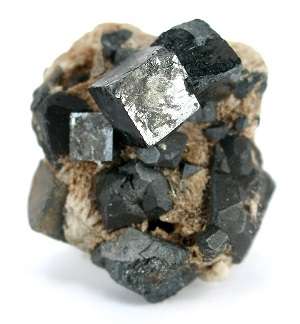Credit: Delft University of Technology
Perovskites are promising materials that can be used in solar cells. TU Delft researchers have shed more light on what apparently makes these perovskites so suitable as solar cell material. They published their findings on this in Nature Materials on Monday 3 October.
Costly
The material most commonly used for solar cells at present is silicon. A major disadvantage of solar cells made of silicon, however, is the laborious and relatively costly production process involved. 'One of the possible alternatives is solar cells based on perovskites', explains Dr. Tom Savenije, researcher at TU Delft. Savenije: 'Interestingly, perovskites are made from extremely cheap starting materials and the processing is relatively simple, comparable to what is used for organic solar cells.'
Efficiency
Perovskites are materials which, in terms of structure, resemble calcium titanium oxide, a mineral named after the mineralogist Perovski. It is only recently that research has been conducted into the possible use of metal halide perovskites as photo-active layer in solar cells.
'The results and progress achieved in such a short space of time are quite spectacular', Savenije says. 'The efficiency of the solar cells (albeit in laboratory conditions) has risen extremely quickly. In 2009 the efficiency was 3% and already in 2016 an efficiency of 22% was achieved, comparable to that of polycrystalline silicon solar cells. This has prompted widespread enthusiasm for research into perovskites.'
Direct and indirect
As research into perovskites is in its infancy, we still know very little about the fundamental properties. In their publication in Nature Materials, doctoral candidate Eline Hutter and her colleagues elucidate how perovskites work as solar cell material. 'We show experimentally that perovskites (in this case methylammonium lead iodide) combine the good properties of so-called direct semiconductors, such as GaAs, and those of indirect semiconductors, such as silicon', Hutter explains.
Charge carriers are created in perovskites by exciting electrons with sunlight, similar to excitation in the semiconductor material GaAs. The opposite to excitation is the recombination of charges; a process you want to minimise in solar cells. In perovskites, recombination turns out to occur indirectly, and therefore slowly, as it does in silicon. 'This combination of properties of direct and indirect semiconductors is very favourable.'
Limitations
Savenije acknowledges that certain obstacles must be overcome before perovskite-based solar cells can be used on a wide scale. 'There are two important disadvantages: firstly the material contains lead, albeit in small quantities. Another disadvantage is material degradation through moisture. Given the substantial potential advantages of perovskites, many research groups around the world are working hard to resolve these obstacles.'
More information: Eline M. Hutter et al. Direct–indirect character of the bandgap in methylammonium lead iodide perovskite, Nature Materials (2016). DOI: 10.1038/nmat4765
Journal information: Nature Materials
Provided by Delft University of Technology























